Pet bowl and indoor garden opportunities
From DDL Wiki
(→User Scenario) |
(→Gantt Chart) |
||
| Line 239: | Line 239: | ||
==Gantt Chart== | ==Gantt Chart== | ||
| - | + | [[Image:Pet_Bowl_Gantt_Chart.png] | |
| - | + | ||
| - | + | ||
| - | + | ||
| - | + | ||
| - | + | ||
==Team Member Roles== | ==Team Member Roles== | ||
Revision as of 19:22, 24 February 2014
Contents |
Executive Summary
Market Research
Observation Studies
Indoor Garden
Pet Bowl
As our observation study, we watched an individual take care of three pets during meal time, and even tried the feeding process ourselves. We fed one large cat, one small cat, and one small dog. We found that the large cat finished first and immediately went over to the small cats bowl and started eating its food. We had to then manually move the big cat and then stand by the little cats bowl while it ate. The big cat then would go over to the dogs bowl and start eating its food until we moved the large cat away again. We ended up sitting around for 15 min while the animals finished their food. The experience was rather annoying and time consuming, and the large cat was never really deterred from eating from the other animals bowls. The pet owner faced the exact same challenges, and she hated the process, but didn't know of any other good solutions.
Other observations from the feeding process:
- The dog and the little cat did not put up a fight when the big cat came over to eat their food.
- The little cat did not eat all its food at once. It would walk away from the bowl for a few minutes, and then come back to finish.
- The dog and the little cat would sit next to their bowl while the big cat ate its food. They would wait patiently until the big cat left or was moved away and then would continue eating.
Expert Interviews
Indoor Garden
For our expert interview for the indoor gardening idea, we interviewed a staff member of Phipps conservatory, Mr. Dunigan. Phipps is a plant conservatory located in Pittsburgh. Most of the plants are located indoors, in a very controlled environment, and are maintained by a full staff. Generally the plants are grown in a greenhouse located behind the conservatory and then moved out to the main area once fully grown. Mr. Dunigan and the other staff members grow all kinds of plants, from all over the world, and thus know a lot about the difficulties associated with indoor gardening.
Here are the main conclusions we drew from the interview with Mr. Dunigan:
- The hardest part of growing plants indoors is maintaining the environment. Plants often require specific environmental conditions and, if these conditions aren't met, the plants will die. On top of this, different plants can require very different conditions, which
- Heat and light is generally provided by a heat lamp, and the intensity of the heat lamp is dependent on the needs of the specific plant.
- Plants are watered carefully, as to not drown the plant. The amount of water used is also dependent on the needs of the specific plant.
- One common problem people have with growing plants at home is maintaining a temperature. Oftentimes, especially in places that have central heating and air conditioning, plants experience a wide range of temperatures, which can make plant growth difficult.
- Plants are very expensive to maintain.
Mr. Dunigan was very helpful in learning about indoor gardening and the difficulties involved, though it should be noted most of the issues he dealt with involved growing large numbers of plants in a greenhouse. This information is still very relevant to our topic and helpful when making our design choices in regards to indoor gardening.
Pet Bowl
Surveys
Product Reviews
Indoor Garden
Through websites like Amazon, CNET, Mommy Poppins, and Pinterest we were able to learn about the main problems customers who want the ideal indoor garden face. A lot of people who have bought their own indoor gardens from competitors or have made theirs, wish their systems could work completely on their own. Customers want the system to be able to take care of all of the plant’s needs: water, light, nutrients, soil, temperature, and space.
A customer wants their experience cultivating plants to be simplified. Being able to replace plants is a challenge since plants must be re-potted and soil needs to be replaced. Some of the existing products do not handle this step and don’t notify the user when the plant must be re-potted.
Another feature customer look for, is a system that can be customized for each plant. If the water/light cycle could be set differently from each plant, that would be ideal. Customers would like pots to come in different sizes, be able to manage different types of water/light cycles, and also to be able to adjusts lights during the day and night. Current products don’t provide these settings to customers which are necessary if someone wants to produce more than one type of plant in their home.
Pet Bowl
The main concerns pet owners have with automatic feeders (i.e. The Gatefeeder) is that they don't want the pet bowl to harm their pets. Through online reviews, current pet bowl feeders with sensors have the tendency to close the lid/door on the pet. This causes injuries and can sometimes lead to the pet no longer wanting to eat from the bowl. Also, these sensors don't always work. When the sensor can't register the right pet it will open and close uncontrollably. Pet owners want to make sure the pet's food is secured, stored, and maintained by the system. If the lid is left opened for too long the food can go bad leading unwanted odor.
Market Opportunities
Top 3-5 Design Concepts
|
Rotating Automatic FeederThis design is for people with multiple pets who don’t want the animals eating each other’s food and wants minimal upkeep. This bowl would most likely use an RFID sensor to identify when the correct pet is near and will rotate a pocket of food to an open position so the pet can consume the food. When the pet goes away or the wrong animal approaches, the food pocket will rotate around the track to the enclosure where the pocket will be refilled by a hopper that is connected to a guiding tube. By rotating the pocket to the hopper everytime, the pet will always have food to eat, and the wrong pet cannot get to the other pets food. The center of the bowl also could be used for water. The food is loaded by lifting the cover of the enclosure and pouring in food. Pro:
Con:
Patent:
Elevator FeederThis design is similar to an existing product the Gatekeeper in the sense that is uses a housing to restrict the number of pets that can reach the food at one time. Initially this housing has the food in a lowered position with a barrier, but once the correct cat gets close to the housing, the food gets raised up and the barrier is moved. The pet walks up a ramp and can poke its head thru an adjustable hole and eat. If the wrong pet comes near the bowl or the correct cat leaves, the food will be lowered so the pet cannot eat the food. The food is loaded by opening a compartment when the bowl is in the lowered position. Pro:
con:
Patents:
Simple Rotating BowlThis design uses a simple motor to rotate a cover that is over a partitioned bowl. When the correct pet approaches, the cover rotates to a compartment with food. If the correct pet moves away from the bowl or the wrong pet moves toward the bowl, the cover rotates to block the food. The motor would be activated by a RFID sensor and the food would be loaded by lifting the cover making the product easy to clean. Pro:
Con:
Patents: US6349671 B1 (Rotating multiple pet feeder): Uses sensor to open appropriate compartment.
Vibrating Color W/ BowlWhere the other designs focus on stopping the wrong pet from getting to the food, this design aims to keep the incorrect pet away from the bowl entirely. Like the other designs, this vibrating collar would have an RFID sensor attached to the pet via its collar that would start to vibrate using an offset weight to generate the vibration. Once the pet gets close to the wrong bowl, the vibrations would start making it difficult to eat. The amount of vibration would also be proportional to the distance the pet was in relation to the bowl. The closer the pet is to the wrong bowl, the stronger the vibration. Pro:
Con:
Pantents:
Tree ConsoleInstead of having a singular housing for all of ones plant, this design allows the user the option to move his or her plants around his or her apartment or house. The pods have to be plugged into the walls or the center console that is shaped like a tree. The pods have water tanks that allow the user to fill them up and the sensors will regulate the amount of water the plants will get. The pods also have LED lights that give the plant even light. The pods and the center console are designed to look aesthetically pleasing, but due to the large number of sensors, the pods are slightly difficult to program. Pro:
Con:
Patents: US 8549788 B2 (Hydroponic growing system): Uses a planting trough, solar panels, and liquid nutrients to care for plants. Competitor ProductsWeb Searches
Pugh ChartsGantt Chart[[Image:Pet_Bowl_Gantt_Chart.png] Team Member RolesMelanie Jasper: Derek Lessard: Daniel Mark: Gloriana Redondo: Daniel Tabrizi: Findings and RecommendationsRecommendationUsing our Pugh chart and the findings front the user studies and market research, we decided the *** pet bowl concept was the optimal design for building in this course. We found that the vibrating collar design got the highest score on the Pugh chart, but it has a very simplistic design, and thus not optimal for building as a project for the rest of the semester. The *** design was only one point lower in total in the Pugh chart, and we felt that is was a simple, yet effective design. This design will maintain the low-medium cost we were looking for while still effectively and consistently being able to prevent animals from eating from the wrong bowls. The other designs, other than the vibrating collar, were so complex that they would be too expensive and the complexity would lead to concerns about the products reliability. The design also fairly safe for the animals, seeing as it is designed in such a way to minimize parts of the animal getting caught. Finally, the design is fairly easy to clean due to its simplistic design and it can hold dry and wet food, which can be a big problem in more complex designs. User ScenarioThere is a family of two parents and a small child who own a cat and a dog. The cat has health problems so it must take medicine with its food. However, the dog routinely will eat the cat’s food once it is finished with its own food. On the other hand, the small child sometimes gets to the pets bowls and tries to eat the food. The family has disposable income, but is unwilling to hurt the dog to fix the problem. Appendix A: 100 Brainstorming Ideas1. Automatic feeder w/ chain assembly. 2. Three layer pet bowl. 3. Interactive layer pet bowl. 4. Wet/Dry Food automatic feeder with compartments. 5. Bowls with lids over each: open and close when cat gets near. 6. Rotating bowl: displays food in small quantities. 7. A pet bowl dispenser: dispensing food so long as pet keeps eating. 8. One size bowl. 9. A pet bowl that pushes bad cat's face out to minimize risk of trapping it. 10. Bowl which dispenses piece by piece. Food gets scooped back to top if not eaten. 11. Pet bowl with segmented doors. 12. Pet bowl that sprays water/air to annoy bad cat. 13. Bowl that moves food away from bad cat. 14. Multiple bowls. 15. Rotating plant. 16. Series of plants in a conveyor belt. 17. Indoor greenhouse. 18. Dangling plants: receive artificial lighting and water from sprinklers. 19. Modular stack-able design. 20. Plants hang from windowsill bars: plugged in to receive water/light. 21. Tree design. 22. Egg shaped pot. 23. Plant pot with heated pad: induction coils or peltier cells. 24. Plug in pots with battery packs. 25. Pots with water screen to limit water flow. 26. Pots with sensors notifying user when to replace soil/water. 27. Rotating Shelves. 28. Hinged pot. 29. Plastic sieve. 30. Chicken wire sieve to re-pot. 31. Full capsule pot w/ full environmental controls 32. Changing size wire top w/ water and light 33. Puzzle piece pod design 34. Self Sustaining Pod design 35. Screw on enviro lid 36. Elevator bowl w/ small hole opening 37. All in one, multi-pet feeder 38. Vibrating collar 39. Electromagnet flap housing 40. Magnetized bowl and collar References1. Moser, Laura. "The Best Indoor Gardening Gadgets." The Wall Street Journal. May 16, 2013. Web. February 7, 2014. <http://online.wsj.com/news/articles/SB10001424127887324744104578474963531404732> 2. GateFeeder. "Feeds the right meal to the right cat." BeansBox. 2014. Web. February 7, 2014. <http://gatefeeder.com/> 3. AeroGrow. "Miracle-Gro AeroGarden 7-Pod Indoor Garden with Gourmet Herb Seed Kit." Amazon.com. 2014. Web. February 7, 2014. <http://www.amazon.com/Miracle-Gro-AeroGarden-Indoor-Garden-Gourmet/dp/B000FI4O90/ref=cm_cr_pr_pb_t> 4. Hydrofarm. "Hydrofarm CK64050 Germination Station with Heat Mat." Amazon.com. 2014. Web. February 7, 2014. <http://www.amazon.com/Hydrofarm-CK64050-Germination-Station-Heat/dp/B000HHO1RO/ref=sr_1_6?ie=UTF8&qid=1393129138&sr=8-6&keywords=garden> 5. Garden at Home. "Garden at Home 42414 Italian Herb Trio." Amazon.com. 2014. Web. February 7, 2014. <http://www.amazon.com/Garden-Home-42414-Italian-Herb/dp/B0009WRJ6C/ref=sr_1_34?ie=UTF8&qid=1393129303&sr=8-34&keywords=garden> 6. Lombardi, Candace. "Desktop Gardening." cnet. November 21, 2006. Web. February 7, 2014. <http://news.cnet.com/8301-17938_105-9664329-1.html> 7. Fader, Anna. "My Apartment Garden: How to Grow an Indoor Herb or Vegetable Garden." Mommy Poppins. March 18, 2012. Web. February 7, 2014. <http://mommypoppins.com/newyorkcitykids/apartment-garden-how-to-grow-an-indoor-herb-or-vegetable-garden-with-grow-lights> |
|||||||||||||||||||||||||||||||||||||||||||||||||
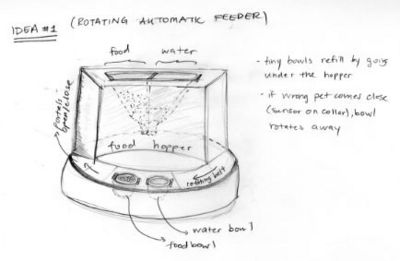
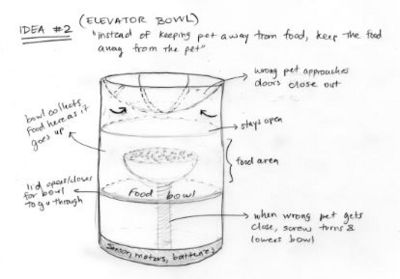
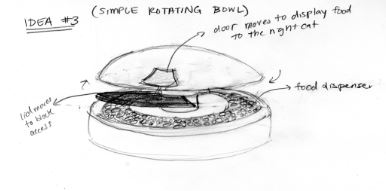
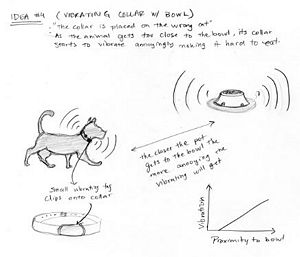
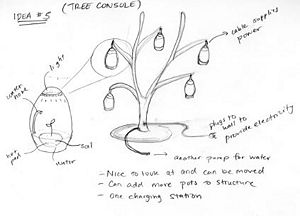
![[1]](/ddl/images/thumb/Clickandgrow.jpg/200px-Clickandgrow.jpg)
![[2]](/ddl/images/thumb/AeroGarden.jpg/200px-AeroGarden.jpg)
![[3]](/ddl/images/thumb/Windowfarms.jpg/200px-Windowfarms.jpg)
![[4]](/ddl/images/thumb/Gatefeeder.png/200px-Gatefeeder.png)
![[5]](/ddl/images/thumb/Petwonderbowl.png/200px-Petwonderbowl.png)
![[6]](/ddl/images/thumb/Automaticpetfeeder.jpg/200px-Automaticpetfeeder.jpg)
![[7]](/ddl/images/thumb/Vibratingcollar.jpg/200px-Vibratingcollar.jpg)
